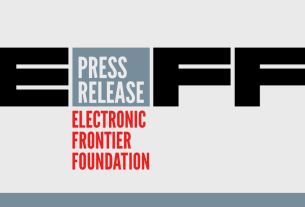What is customer service?
At its most basic level, customer service is about solving a customer’s problem when they can’t solve it themselves.
That may be a perfectly reasonable way to think of customer service – but does it blow your socks off? Would this description make you so loyal to a brand that you would trust it with your most valuable investments?
Years ago, I stayed at a high-end hotel in Paris. As I got out of my cab, I noticed the doorman taking a picture of its license plate. Heading to my room, I stopped to ask the doorman why he’d taken the picture. He smiled and explained that it enabled him to know which cab a guest took so that if they left something behind (which many of us have), they could contact central dispatch quickly and return the item to its owner.
Now, that’s customer service that blows your socks off. It solves a problem that you didn’t even know you had. It reduces your stress and provides you with an unforgettable experience.
How does this story relate to the current state of enterprise IT, especially in the context of cloud adoption and digital transformation? Consider how the following four examples of exceptional customer service can simplify the life of the enterprise IT professional as the pace of technology and business demands skyrocket.
1. Bridge the knowledge gap
Vendors that serve multiple customers understand the common pitfalls in adopting their technology and products. Too often, the selling process portrays product and technology adoption as smooth sailing, but the reality is often far from it.
If you take the time to proactively understand your enterprise customer’s environment and help create a realistic adoption roadmap, you will provide an exceptionally valuable service. For example, two of the most critical challenges in any cloud migration story involve network connectivity and security operations. The challenges in both areas are relatively consistent among customers, so educating your prospects and helping solve them will reap huge dividends.
2. Identify crystal moments
Non-fungible moments, also known as crystal moments, are liable to break and not reoccur.
It’s no different in the IT landscape. Vendors that can clearly articulate an approaching crystal moment (e.g., a zero-day product vulnerability) create a sense of actionable urgency within an IT organization that is chronically under-staffed, over-loaded, and appreciative of genuine guidance in times of trouble.
[ Also read Security in 2023: 6 trends for IT leaders. ]
Security – especially in a cloud migration context – often falls into this category. Timely awareness of security advisories (e.g., log4 issues) enables organizations to get ahead of hackers by securing their systems and protecting against a breach.
In the cloud world, hours can be a lifetime from a security perspective. Acting fast to keep your customers informed will help you earn and maintain their trust.
3. Take an expansive view
Most vendors limit customer service to their own products or services. However, very few enterprise products or services operate in a silo, and many problems emerge at the seams.
This is especially true with products or services that either integrate with the public cloud or run on the public cloud. Even as public cloud platforms have become ubiquitous, customer service for public cloud platforms tends to be geared more toward self-service developers than enterprise IT.
Make a positive difference by taking ownership of issues beyond your own technology stack. Build expertise on the underlying public cloud platforms, especially for infrastructure products in the enterprise.
4. Make every interaction delightful
Anyone who’s ever been bounced from one tier of support to another knows that having a problem resolved at the first call is a rare and wonderful event. Yet most companies don’t solve this situation because customer service is often considered a cost center rather than a strategic benefit.
Ensuring resolution on the first call requires hiring technical talent into customer service organizations. You need to ensure team members are well compensated and have career choices (including a path to engineering as appropriate). Finally, you must build a culture where customer obsession is front and center.
Easier said than done? Sure, but when you see such an organization at work, it’s magic.
As the world of technology gets increasingly complicated, exceptional customer service can make navigating that world easier and less stressful. What more could you – and your customers – possibly ask for?
[ Learn how leaders are embracing enterprise-wide IT automation: Taking the lead on IT Automation. ]



